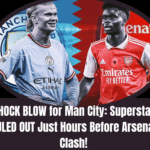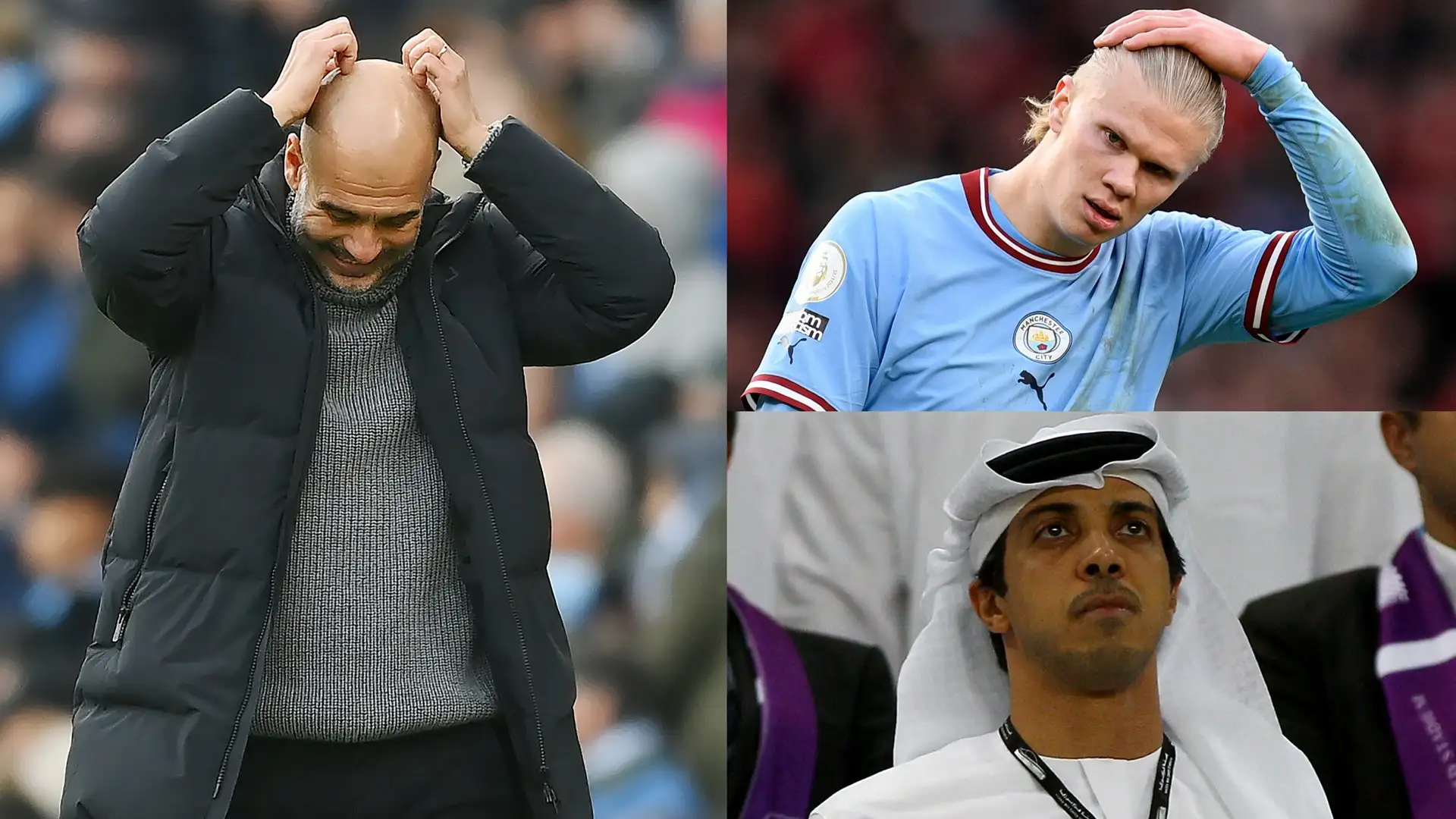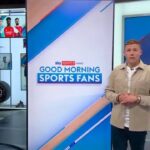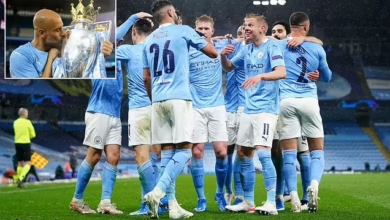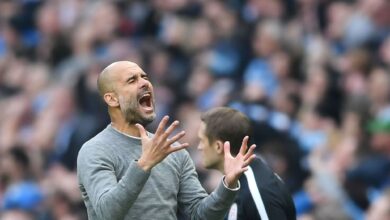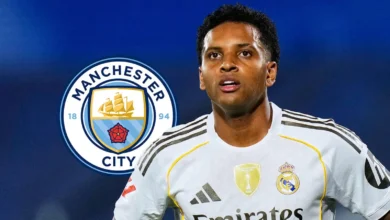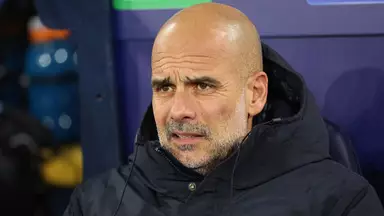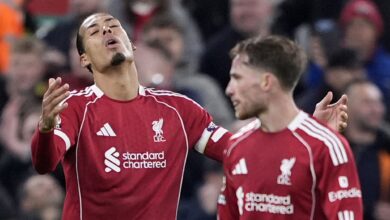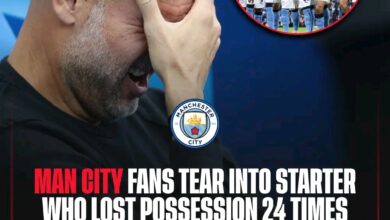Man City face Rodri injury wait with four players to miss Monaco Champions League tie
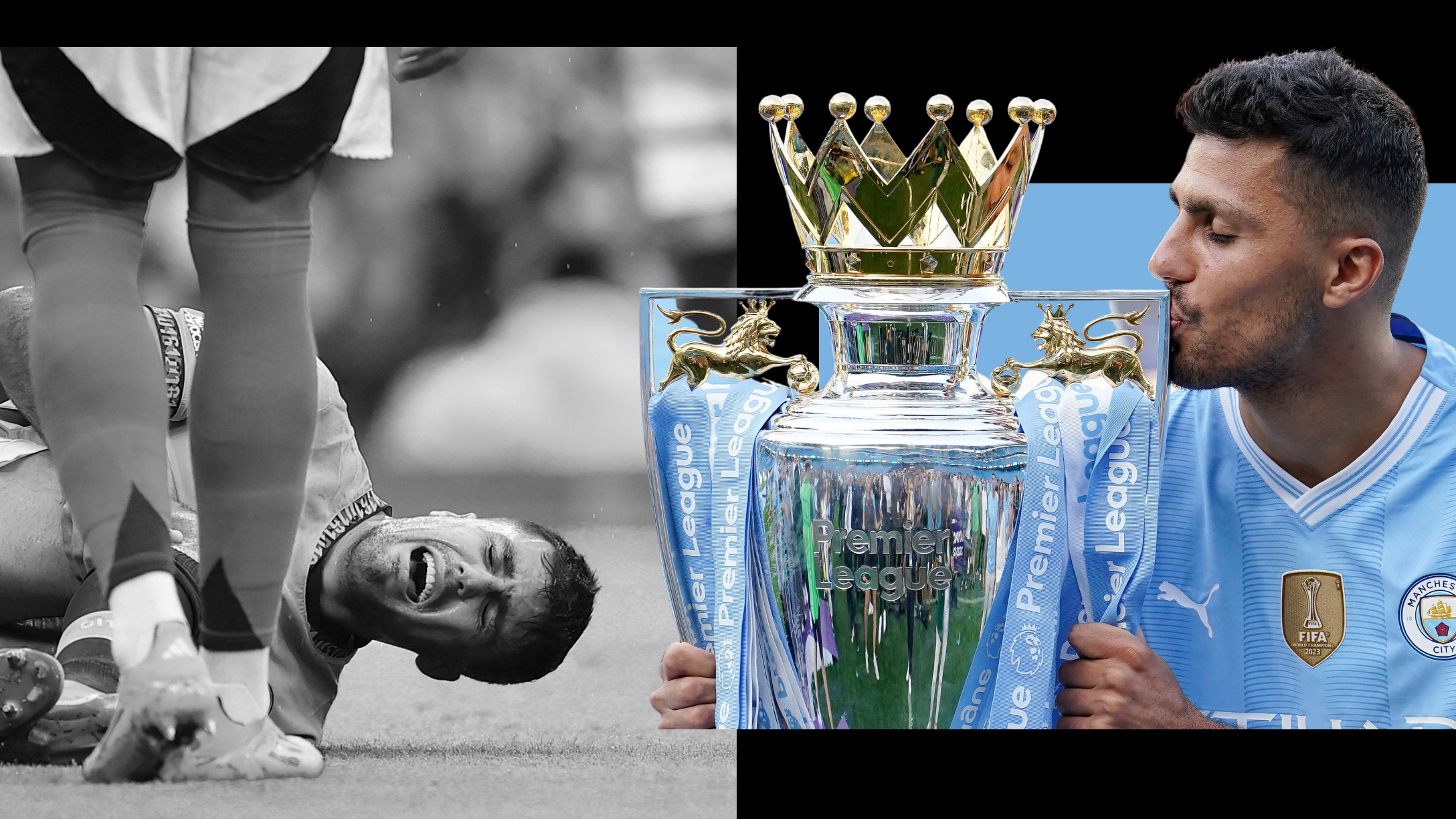
Manchester City’s impressive 5-1 Premier League victory over Burnley at the Etihad Stadium may have provided the perfect tonic after recent struggles, but beneath the surface of this commanding performance lies a growing concern that threatens to derail their ambitious campaign across multiple competitions. As Pep Guardiola’s side prepare for their crucial Champions League encounter against AS Monaco, the Spanish tactician faces his most challenging selection dilemma of the season, with five key players nursing various injuries that could significantly impact the club’s pursuit of European glory.
The Rodri Conundrum: City’s Metronome Under Threat
At the heart of Manchester City’s injury concerns lies the fitness of Rodrigo Hernández Cascante, universally known as Rodri, whose absence from the Burnley victory has sent ripples of anxiety through the blue half of Manchester. The Spanish international, who has evolved into one of the most influential defensive midfielders in world football, represents far more than just another squad member – he is the tactical fulcrum around which Guardiola’s entire system revolves.
Rodri’s knee complaint, which ruled him out of Saturday’s emphatic win, highlights the precarious nature of Manchester City’s reliance on individual brilliance within their collective framework. The 28-year-old’s role as the deep-lying playmaker and defensive shield cannot be understated; his ability to dictate tempo, break up opposition attacks, and initiate City’s patient build-up play from deep positions has become integral to their tactical identity.
Guardiola’s post-match comments following the Burnley game revealed the uncertainty surrounding his star midfielder’s condition. “I don’t know right now how the pain is in his knee,” the City manager admitted with characteristic honesty. “He said to us that he was not ready to play.” This admission underscores the day-to-day nature of injury management at elite level, where players’ physical condition can fluctuate dramatically within hours.
The tactical implications of Rodri’s potential absence against Monaco cannot be overstated. Since his arrival from Atlético Madrid in 2019, the Spanish international has transformed City’s midfield dynamics, providing the perfect blend of defensive solidity and progressive passing that allows more creative players like Kevin De Bruyne and Bernardo Silva to flourish in advanced positions. His ability to read the game, coupled with his exceptional passing range and press resistance, makes him virtually irreplaceable in Guardiola’s system.
From a statistical perspective, Manchester City’s performance metrics drop significantly when Rodri is absent. The team’s pass completion rate, defensive actions per game, and overall control of proceedings all diminish without his stabilizing presence. This dependency on a single player, while testament to Rodri’s exceptional quality, also exposes a potential vulnerability in City’s squad construction.
The Defensive Reshuffle: Khusanov’s Emerging Importance
Abdukodir Khusanov’s injury represents another significant blow to Manchester City’s defensive structure, particularly given the Uzbekistan international’s recent emergence as a reliable option in the problematic right-back position. The 21-year-old’s rapid integration into Guardiola’s first-team plans speaks volumes about both his adaptability and the manager’s faith in young talent.
Khusanov’s journey from relative obscurity to Premier League regular reads like a modern football fairy tale. His progression through City’s academy system and subsequent breakthrough into senior football demonstrates the club’s commitment to developing talent from within. The fact that he had established himself as a consistent starter, making three successive appearances in the right-back role before his injury against Arsenal, highlights both his personal growth and City’s tactical flexibility.
The timing of Khusanov’s injury is particularly unfortunate, coming at a moment when he appeared to have solved one of Guardiola’s most persistent positional headaches. The right-back position has been a source of constant tinkering for the City manager, with various players including Kyle Walker, Rico Lewis, and even central defenders pressed into service in that role. Khusanov’s natural attacking instincts, combined with his defensive awareness, had begun to provide the perfect balance that Guardiola seeks from his full-backs.
His forced substitution at half-time during the Arsenal encounter not only disrupted City’s tactical plan for that specific match but also created a longer-term selection problem. The injury, described vaguely as “unknown” in nature, reflects the complex reality of modern sports medicine, where the exact extent and nature of muscular or joint problems often require extensive assessment and monitoring.
The ripple effects of Khusanov’s absence extend beyond mere team selection. His injury forces Guardiola to reconsider his defensive balance, potentially requiring tactical adjustments that could impact the team’s overall structure and playing style. The manager may need to deploy more experienced players out of position or rely on academy graduates who lack Premier League experience, both options carrying inherent risks in high-stakes European competition.
Marmoush’s Continental Comeback Trail
Omar Marmoush’s injury situation illustrates the complex intersection between club and international football that defines the modern game. The Egyptian international’s knee problem, sustained during his national team’s goalless draw with Burkina Faso, exemplifies the additional injury risks that players face when representing their countries, particularly during congested fixture periods.
The image of Marmoush returning to Cairo on crutches served as a stark reminder of football’s physical demands and unpredictable nature. His withdrawal just nine minutes into the match against Burkina Faso, after initially attempting to continue despite obvious discomfort, demonstrated both his commitment to the Egyptian cause and the severity of his injury.
From Manchester City’s perspective, Marmoush’s absence represents the loss of a versatile attacking option who had begun to establish himself within Guardiola’s rotational system. The 26-year-old’s ability to operate across multiple forward positions, combined with his pace and direct running style, provided tactical flexibility that proved valuable in breaking down stubborn defensive setups.
The rehabilitation process for Marmoush has been carefully managed, with City’s medical team working closely with Egyptian national team doctors to ensure optimal recovery. The decision to conduct initial scans in Egypt before returning to Manchester for further assessment reflects the global nature of modern football medicine, where expertise and resources are shared across continents to ensure the best possible outcomes for players.
City’s initial optimism about Marmoush’s potential return before the international break has given way to a more cautious approach, with the Everton fixture now representing a more realistic target. This extended timeline reflects the complexity of knee injuries, which often require extended periods of rehabilitation to prevent long-term complications.
The psychological aspect of Marmoush’s recovery cannot be overlooked. International injuries often carry additional emotional weight for players, who may feel they have let down both their country and club. The extended period away from competitive action could impact his match sharpness and confidence levels upon return, factors that Guardiola and his coaching staff must carefully manage.
Cherki’s French Connection Frustration
Rayan Cherki’s thigh injury represents perhaps the most frustrating situation from Manchester City’s perspective, given the France international’s recent arrival and the expectations surrounding his integration into the squad. The former Lyon midfielder’s two-month lay-off comes at a crucial time in his City career, when establishing himself within Guardiola’s tactical framework should have been his primary focus.
Cherki’s injury occurred during a period when he was beginning to show glimpses of the creativity and technical ability that convinced City to secure his services. The timing is particularly cruel for a player who was eager to make his mark in English football and justify the faith shown in him by the City hierarchy.
The nature of thigh injuries in football often stems from the explosive demands of the modern game, where players are required to accelerate, decelerate, and change direction at maximum intensity. For creative midfielders like Cherki, who rely on sudden bursts of pace and intricate footwork to unlock defenses, such injuries can be particularly debilitating both physically and mentally.
From a tactical standpoint, Cherki’s absence limits Guardiola’s creative options, particularly in central midfield areas where his technical ability and vision could have provided alternative solutions to City’s build-up play. His injury forces the manager to rely more heavily on established players, potentially reducing the tactical unpredictability that has been a hallmark of City’s recent success.
The rehabilitation process for Cherki will require careful balance between ensuring complete recovery and maintaining match fitness. Extended periods away from competitive action can impact a player’s tactical understanding and integration within team structures, particularly important for someone still adapting to Guardiola’s complex tactical demands.
French national team medical staff are reportedly optimistic about Cherki’s potential early return, though City’s medical team maintains a more conservative approach. This difference in assessment timelines reflects varying priorities, with the national team potentially more willing to accept risks for upcoming fixtures while City focuses on long-term player welfare.
Ait-Nouri’s Ankle Anguish and Summer Investment Concerns
Rayan Ait-Nouri’s ankle injury carries particular significance given his status as a major summer acquisition and the expectations surrounding his contribution to City’s left-back position. The £31 million investment in the former Wolves defender represented a statement of intent from City’s hierarchy, addressing a position that had required tactical compromises in previous seasons.
Ait-Nouri’s injury during his home debut against Tottenham was a cruel blow for both player and club. The Algerian international had shown promising signs of adaptation to Guardiola’s tactical demands, demonstrating the attacking instincts and defensive reliability that made him an attractive target during the summer transfer window.
The progression of his injury timeline illustrates the unpredictable nature of ankle problems in professional football. Initially able to participate against Brighton despite discomfort, his subsequent withdrawal from Algeria’s World Cup qualifying campaign indicated the severity of the issue. Ankle injuries often require extended rehabilitation periods, as the complex joint structure and weight-bearing demands make complete recovery challenging to predict accurately.
From a squad planning perspective, Ait-Nouri’s extended absence forces City to reassess their left-back options during a crucial period of the season. His injury could necessitate tactical adjustments or alternative player deployments that might impact the team’s overall balance and attacking threat down the left flank.
The psychological impact on Ait-Nouri himself cannot be understated. Moving to a new club of City’s stature brings inherent pressure, and suffering a significant injury during the adaptation period can create additional anxiety about securing a regular place in the team. The extended rehabilitation timeline means he will need to rebuild match fitness while simultaneously proving his worth to Guardiola and the coaching staff.
Tactical Implications and Squad Management
The collective impact of these five injury concerns extends far beyond simple player unavailability. For a manager of Guardiola’s tactical complexity, each injury creates a ripple effect that influences team structure, playing style, and strategic approach across multiple competitions.
The potential absence of Rodri against Monaco would likely force the most significant tactical adjustment. City might need to deploy a double pivot in midfield, fundamentally altering their build-up patterns and defensive structure. Alternative approaches could include pushing a center-back into midfield or utilizing more attacking midfielders in deeper positions, both options carrying tactical risks in high-level European competition.
The defensive injuries to Khusanov and Ait-Nouri create additional selection headaches, potentially forcing Guardiola to field players out of position or rely on less experienced options. Such compromises could impact City’s attacking threat, as full-backs play crucial roles in Guardiola’s system, providing width and creative outlets in the final third.
The absence of attacking options like Marmoush and Cherki reduces tactical flexibility in forward areas, potentially making City’s approach more predictable for opposing teams to defend against. Their pace and directness provided alternative solutions when City’s typical patient build-up play encountered stubborn defensive setups.
Medical and Recovery Protocols
Manchester City’s medical department faces a complex challenge in managing these multiple injury concerns simultaneously. Each injury requires individualized treatment protocols, carefully monitored rehabilitation programs, and constant assessment of recovery progress.
Modern sports medicine employs sophisticated monitoring technologies to track player recovery, including GPS tracking, heart rate monitoring, and detailed biomechanical analysis. These tools help medical staff make informed decisions about return-to-play timelines while minimizing re-injury risks.
The club’s medical team must balance several competing factors when making return-to-play decisions. Player welfare remains paramount, but competitive pressures, squad availability, and tactical requirements all influence the decision-making process. The challenge becomes even more complex when dealing with international players, whose national team commitments add additional variables to recovery planning.
City’s investment in sports science and medical facilities at their Etihad Campus provides advantages in rehabilitation and injury prevention. The integration of various specialists, including physiotherapists, sports scientists, nutritionists, and psychological support staff, creates a holistic approach to player welfare that maximizes recovery potential.
European Competition Context
The timing of these injuries creates particular challenges given City’s Champions League ambitions. European competition demands different tactical approaches, with opposition teams often employing more defensive strategies that require creative solutions and tactical flexibility.
Monaco presents a specific tactical challenge, with their pace on the counter-attack potentially exploiting any defensive vulnerabilities created by City’s injury situation. The French side’s ability to transition quickly from defense to attack could prove problematic if City are forced to field makeshift defensive arrangements.
The broader Champions League context adds additional pressure to team selection decisions. Every match carries qualification implications, making it difficult to rest players or experiment with untested combinations. The injury situation forces Guardiola to balance immediate competitive needs against longer-term player welfare considerations.
City’s squad depth, generally considered among the best in European football, faces its sternest test during this injury crisis. The quality of replacement options and tactical adaptability will determine whether these setbacks prove temporary inconveniences or more significant obstacles to their European ambitions.
Looking Forward: Recovery Timelines and Future Planning
The projected return dates clustering around the Everton fixture following the international break provide hope for City’s injury situation, but also highlight the extended nature of these problems. The international break offers valuable recovery time, but also presents additional risks for players involved in national team duty.
City’s medical staff will use the break to intensify rehabilitation programs for injured players while carefully monitoring those who remain available for international selection. The two-week hiatus provides opportunities for intensive treatment and graduated return-to-training protocols.
The club’s long-term planning must also consider lessons learned from this injury crisis. Squad depth, training load management, and injury prevention protocols may require reassessment to minimize similar situations in future. The experience gained from managing multiple significant injuries simultaneously will inform future medical and coaching decisions.
Conclusion: Resilience and Adaptation
Manchester City’s injury crisis represents both a significant challenge and an opportunity to demonstrate the squad’s depth and tactical flexibility. While the absence of key players creates undeniable difficulties, it also provides chances for fringe players to establish themselves and for Guardiola to showcase his tactical adaptability.
The true measure of elite football clubs lies not in their performance when everything goes according to plan, but in their ability to adapt and overcome adversity. City’s response to this injury crisis, particularly in crucial Champions League fixtures like the Monaco encounter, will provide valuable insights into their character and championship credentials.
As the medical staff work tirelessly to return injured players to full fitness and Guardiola continues to refine his tactical approach, Manchester City’s supporters can take comfort in the knowledge that their club possesses both the resources and expertise necessary to navigate these challenging circumstances successfully. The coming weeks will test every aspect of the club’s infrastructure, from medical facilities to tactical flexibility, in pursuit of their ambitious seasonal objectives.

